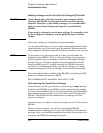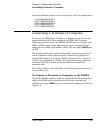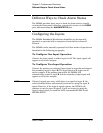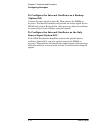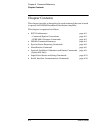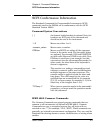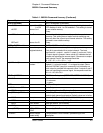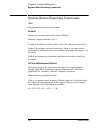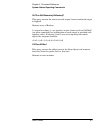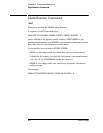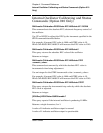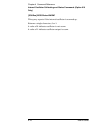
Chapter 4 Command Reference
SCPI Conformance Information
User’s Guide 4-3
SCPI Conformance Information
The Standard Commands for Programmable Instruments (SCPI)
commands used in the 58502A are in conformance with the SCPI
Standard Version 1992.0.
Command Syntax Conventions
IEEE 488.2 Common Commands
The Common Commands are general purpose commands that are
common to all instruments (as defined in IEEE 488.2). Common
Commands are easy to recognize because they all begin with an
asterisk or star “*” (for example, *CLS, *IDN?). These commands are
generally not related to measurement configuration. They are used for
functions like clearing alarms or errors, identification, or setting alarm
enables.
[ ]
An element inside brackets is optional. Note, the
brackets are NOT part of the command and
should not be sent to the instrument.
1 | 2
Means use either 1 or 2.
<numeric_value>
Means enter a number.
POSition
Means you MUST use either all the uppercase
letters or the entire word. The lowercase letters
are optional. For example, POS and POSITION
are both valid. However, POSI is not valid. (Note
POSition is used here as an example, but this
convention is true for all command keywords.) In
other words, the short form of the keywords is
shown in uppercase.
<n>
The notation <n> ending a command keyword
indicates a numeric suffix, used to differentiate
multiple instances of the same structure. The
numeric suffix is applied to both the short and
long forms. The valid range for the value n is
specified from an enumerated list, for example
[1|2|3], or from a range, for example [1..3] to in-
dicate any of the integers from 1 to 3.
"TSTamp 1"
When you see quotation marks in the command’s
parameter, you must send the quotation marks
with the command.




